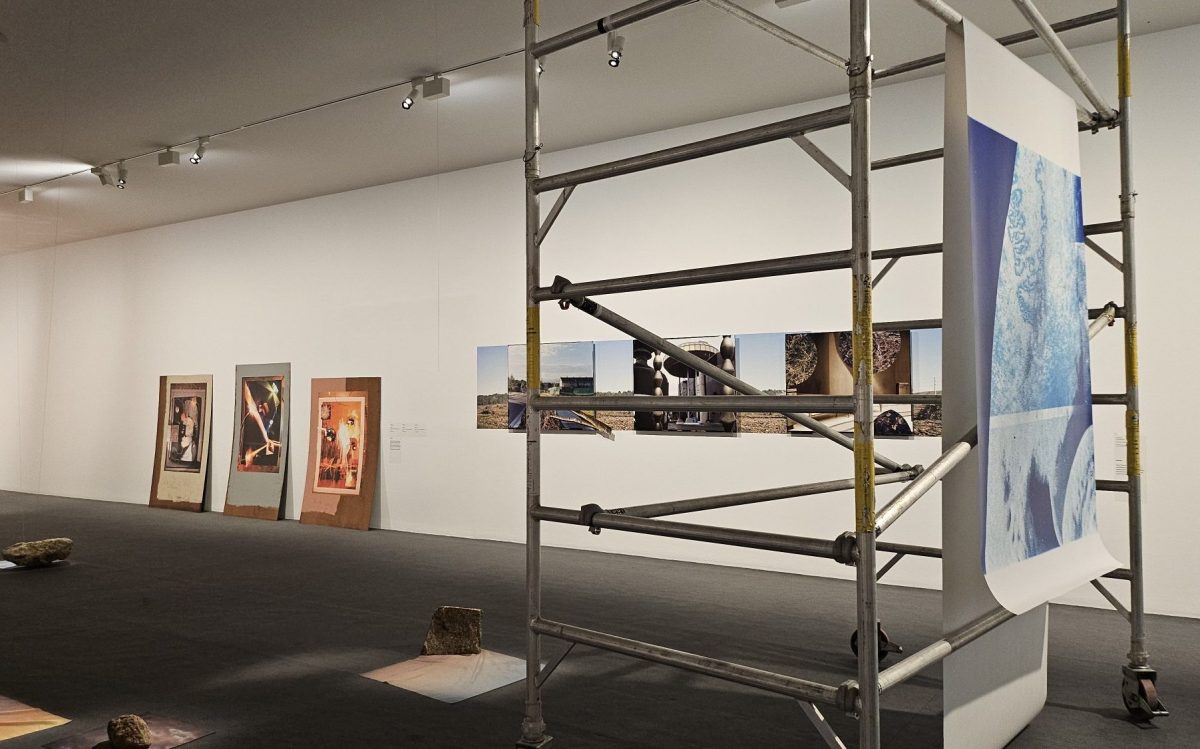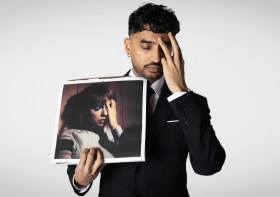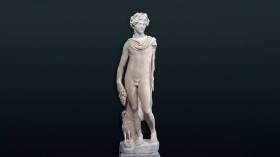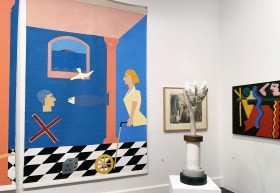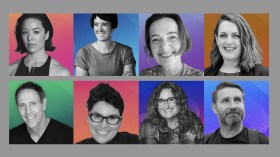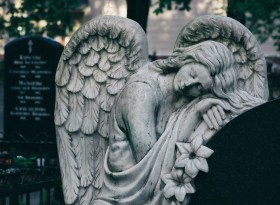As photography’s purpose of “capturing reality” is increasingly contested, the latest exhibition at the Museum of Australian Photography dissects its other defining attribute – namely, two-dimensionality.
Built Photography challenges artists and viewers to consider the product of the medium no longer as an image, but as a construct. It seeks to open up pictorial, spatial and conceptual possibilities by showcasing works that disrupt this preconceived notion of flatness.
The word “built” in the exhibition title is telling, with many of the works by the 16 artists propped up on the backbones of construction material, fabricating a built environment. Standing in immediate proximity to the doorway is Kiah Pullens’ Construction morph-ology (2024), a chromogenic print on aluminium scaffolding and the imagery almost resembling that of a cyanotype.
A timber structure weaves between the two gallery spaces, installed with Don’t be bashful, wear the flower behind your ear (2022) by Talia Smith. Objects of cultural value reflect Smith’s Cook Island heritage, while the structure itself allows images to unfold like a storybook.
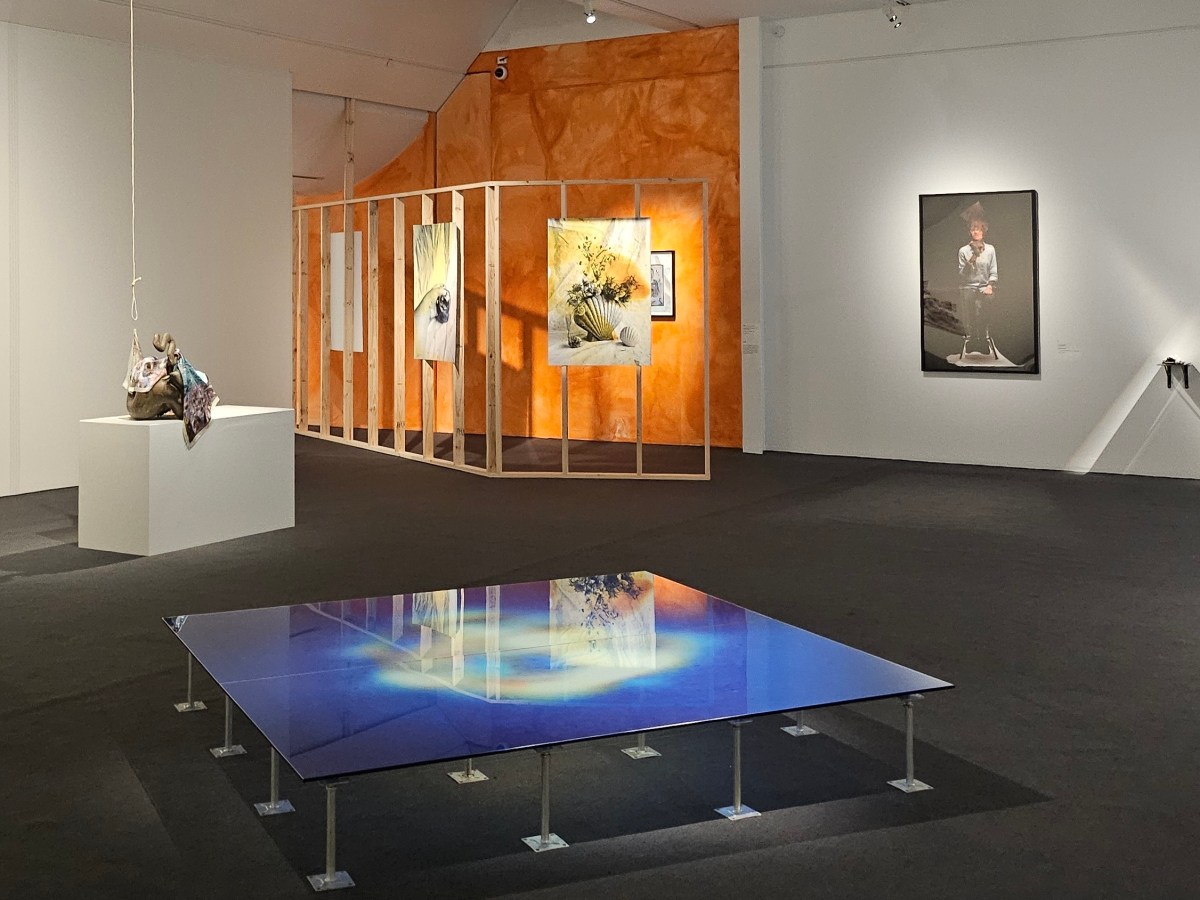
Trent Crawford’s pixilated images of “telepathic summonings” using smiley-face balloons are brought to the ground in their display, while Jessica Curry builds a reflective hoarding around three ink-jet prints with precious lapis lazuli pigment.
Artists such as Luke Parker, Grace Wood and Janina Green deal with the process of image-making, exploring threads between past/present, digital/analogue and captured/constructed.
But does the exhibition break the two-dimensional confines of photography itself or, rather, offer ways of displaying photography in an “inflated” manner? Mostly it is the latter.
One exception is Jacky Redgate’s Untitled from anonymous (probably Daguerre or Niépce de Saint-Victor), ‘table prepared for a meal’ c. 1829 (1990), a rather modest piece compared to the scale of its surrounding works. Redgate’s explorations in both sculpture and photography are exemplified in this piece, which interrogates perception through the lens in a carefully constructed assemblage of a glass, a bottle and a bowl while paying homage to photographic predecessors.
Katrina Stamatopoulos’ Troop (2022-24) goes one step further to throw away even the most loose definition of photography as a “lens-based practice”, with an installation of what looks like warping photographic images that are in fact made without a camera.
Read: Exhibition review: Wilder Times, Bundanon
As one of the encounters most likely to inspire curiosity in the exhibition, Stamatopoulos’ work does raise the question: what separates “three-dimensional photography” from a sculpture or an installation?
And isn’t the charm of photography captured in the fact that it can portray depth and spatiality within the flatness of the image, without having to be physically built into a set?
Perhaps what curators Kiron Robinson and Izabela Pluta wanted to highlight is the breadth of experimentation in contemporary photographic practices, and the dynamic display serves that purpose, but in regards to the provocation of Built Photography, viewers may encounter more questions than answers.
Built Photography is on view at the Museum of Australian Photography until 25 August; free.

